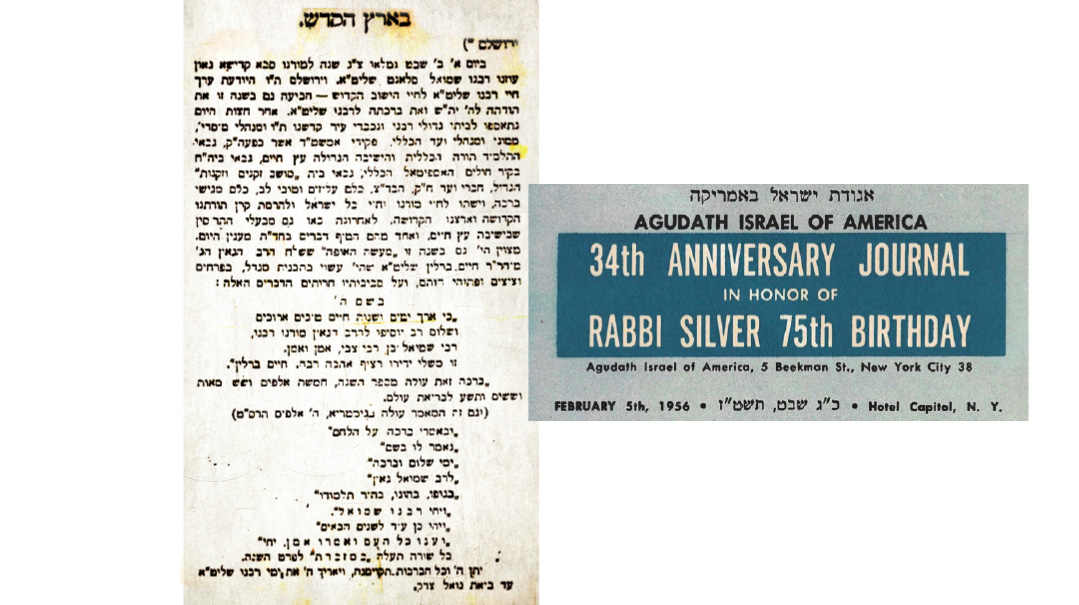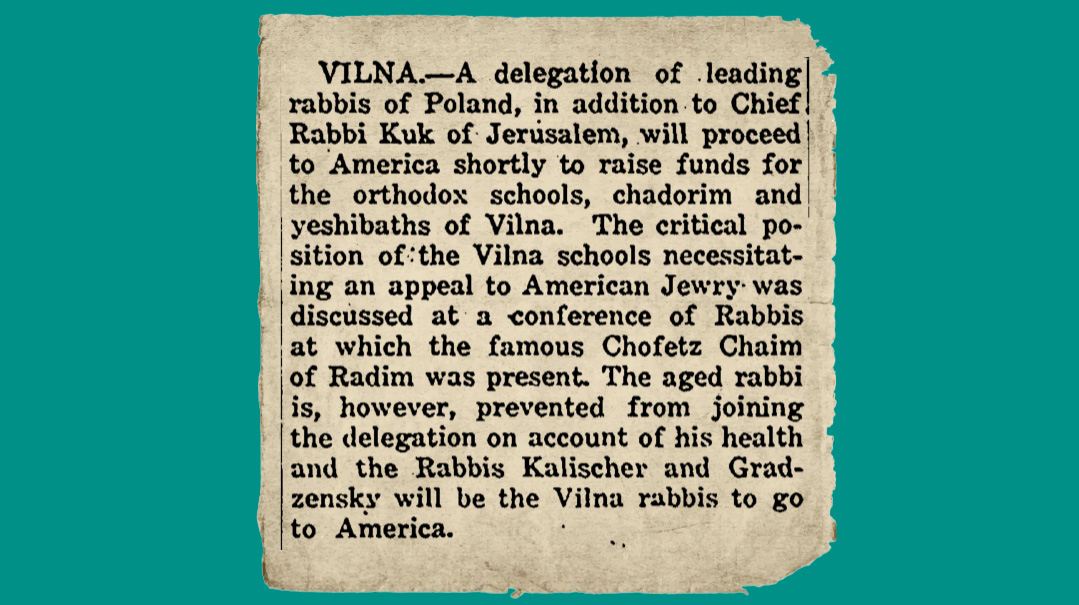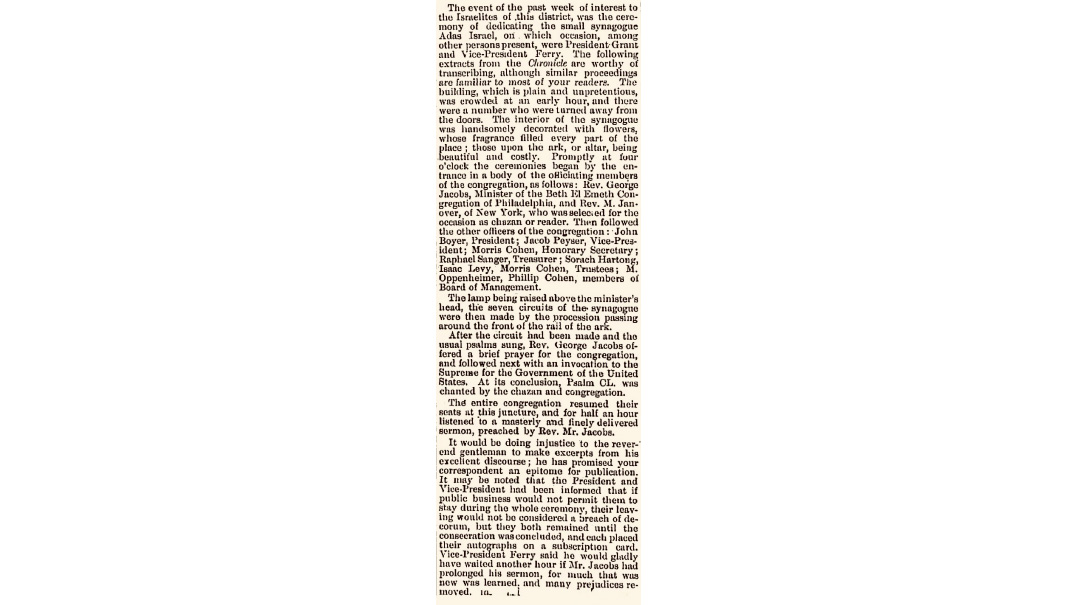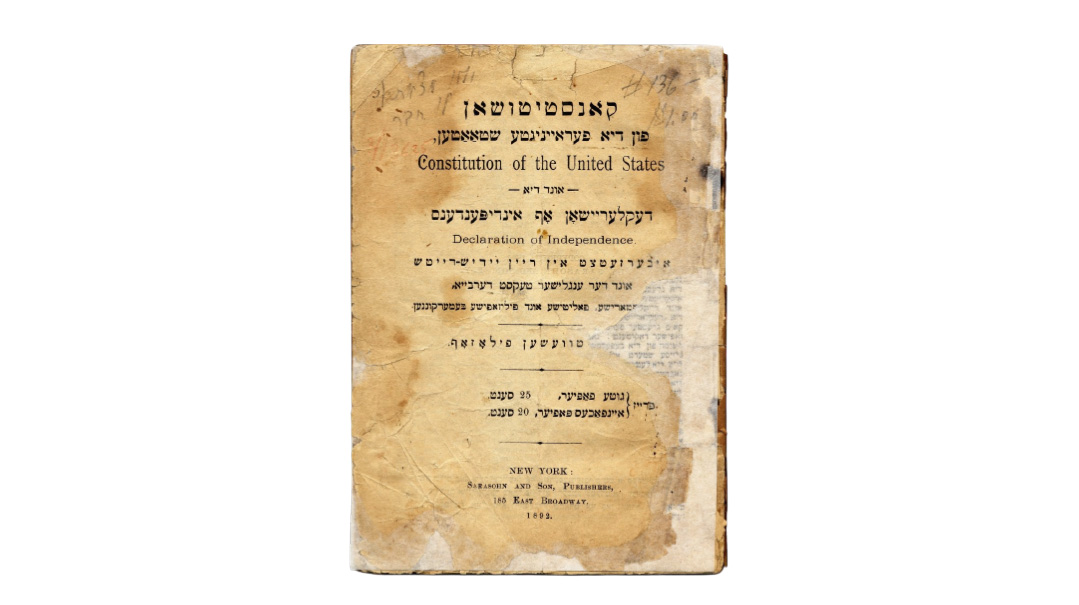Happy Birthday, Rav Salant
| August 8, 2023“In the name of Hashem, wishing a long life with many long years and peace, to Hagaon Moreinu Rabbeinu Rav Shmuel ben Rav Tzvi, amen v’amen."

The Chavetzeles article included a poem in tribute to Rav Salant: “As we recite a blessing on the bread, we hereby declare: Days of peace and blessing shall be the lot of Rav Shmuel Gaon; health, wealth, and Torah scholarship. Long live Rabbeinu Shmuel! May he be with us for many years to come; and everyone shall answer together, amen!”
Title: Happy Birthday, Rav Salant
Location: Jerusalem, Ottoman Palestine
Document: Chavatzeles
Time: 1909
In midwinter 1909 in Jerusalem’s Old Yishuv, the Chavatzeles newspaper reported on an unusual event that occurred at the home of the Ashkenazi community’s longtime beloved rabbi, Rav Shmuel Salant.
Sunday, 2 Shevat, marked the 93rd birthday of Moreinu, the Saba Kadisha and great gaon Rav Shmuel Salant shlita. Yerushalayim values its beloved rabbi and appreciates what he means for the entire yishuv. The community once again expressed its thanks to Hashem and extended good wishes to the rav.
The afternoon reception in his home took place with the participation of rabbinical representatives, city dignitaries, heads of institutions, the administrators of the Vaad Haklali, representatives of the Pekidei Amsterdam here in Yerushalayim, gabbaim of the Eitz Chaim cheder and yeshivah, heads of the Bikur Cholim Hospital, management of the old age home, board members of the Chevra Kadisha, and members of his beis din.
All were in festive mood, presenting their blessings, and drinking a toast for the life and health of the rav, the Jewish People, and the honor of Torah and the Holy Land. A group of Eitz Chaim students were also in attendance, one of whom spoke in honor of the occasion.
With his arrival in Jerusalem in 1841 to join his father-in-law Rav Yosef Zundel of Salant, Rav Shmuel Salant began nearly seven decades of service in various rabbinical roles, coming to dominate the rabbinical leadership of the Ashkenazi Old Yishuv. From his small hovel in the courtyard of the Old City’s Churvah shul, he first served as a dayan on the Ashkenazi community’s beis din, then as a shadar (fundraiser) for the Old Yishuv as well as for the Churvah shul’s building campaign.
With the passing of his father-in-law and also later of Rav Meir Auerbach, he succeeded them in their respective positions as rav of the community and av beis din. He also oversaw the development and expansion of the Eitz Chaim Yeshivah while serving as its titular head.
In an attempt to bring together the various factions among the kollelim of the Old Yishuv, he established the Vaad Haklali Knesses Yisrael, and despite the ongoing differences, he was seen as a uniting figurehead respected by all parties. He also oversaw the establishment of Bikur Cholim Hospital within the Old City walls. He came to renown primarily as a posek, gaining a reputation for wise halachic rulings in both the public and private spheres. In his last years, when he was nearly blind after leading his community through tempestuous times, he was cherished by his community.
The birthday party included another uncommon form of celebration. The Chavetzeles article continued:
This year there was once again a “maaseh ha’ofeh” [birthday cake], which was personally dispatched by Rav Chaim Berlin. It was shaped like a tower and was adorned with flowers, ornaments, and various decorations. The cake was inscribed with the following blessing:
“In the name of Hashem, wishing a long life with many long years and peace, to Hagaon Moreinu Rabbeinu Rav Shmuel ben Rav Tzvi, amen v’amen.
From your dear friend who loves you, Chaim Berlin.”
The inscribed blessing equals the numerical value of the Hebrew year 5669.
As the oldest child of the Netziv, Rav Chaim Berlin had himself served in a long rabbinical career in Russia, including a stint in Moscow. He was later appointed his father’s successor as rosh yeshivah of Volozhin during the tumultuous last years of its existence, prior to its premature closing in 1892. Following his father’s vision, he came to the Land of Israel in 1907 at age 75. While he wished to retire and deliver shiurim to the local residents, he acceded to the request of the community and succeeded Rav Shmuel Salant upon his passing in 1909, serving as the de facto rabbi until his own passing three years later.
Rabbinic Birthday Bashes
While birthday celebrations among rabbis were infrequent in the Old Yishuv, they became fairly prevalent in America during the early- to mid-20th century. Both the Agudath Harabbonim and later Agudath Israel of America employed these occasions for organizing fundraising dinners, selling advertisements in commemorative journals that allowed admirers to convey respect and gratitude for the celebrants, many of whom were America’s leading rabbis. One such instance was Agudath Israel’s 34th anniversary dinner in 1956, held in tribute to Rav Eliezer Silver’s 75th birthday. The invitation read as follows:
This journal will also give living expression to the joyous appreciation in the heart of every American Jew upon the 75th birthday of Rabbi Eliezer Silver of Cincinnati, one of world Jewry’s most distinguished scholars and dynamic leaders. As a presidium-member of the Union of Orthodox Rabbis of the United States and of Agudath Israel of America, Rabbi Silver’s phenomenal scope of activity encompasses every phase of Jewish life the world over.
All the Old Yishuv News That’s Fit to Print
Established in 1863 by Yisrael Bak, Chavatzeles was a prominent religious newspaper serving as the mouthpiece of the Old Yishuv until its closing in 1911. For most of its existence, its editor was Bak’s son-in-law, Yisrael Dov Frumkin, one of the yishuv’s pioneering journalists. Located in the Old City’s Muslim Quarter, the printing press was financed by Sir Moses Montefiore. Chavatzeles stood at the forefront of many of the issues and challenges confronting religious life at the end of the 19th century. Among the more prominent of those were the shemittah wars, which were for the most part waged on the pages of the newspaper.
A Time For Reflection
The Ksav Sofer utilized his birthday for self-contemplation. A story is mentioned in Kuntres Ohel Leah (found at the beginning of Ksav Sofer al haTorah) wherein a disciple discovered the Ksav Sofer in tears. Inquiring as to the reason for his sorrow, the disciple learned that it was the Ksav Sofer’s 54th birthday, and he was judging himself (the Hebrew word for “judge,” dan, equates to 54 in gematria). He felt that his 54 years in this world had not yielded the accomplishments he should have achieved. His perceived deficiency in Torah knowledge and righteousness prompted his tearful epiphany.
This Wednesday, 29 Av, will mark the 114th yahrtzeit of Rav Shmuel Salant.
This article is presented in honor of Rabbi Moshe Kolodny, the esteemed long-time director at the Orthodox Jewish Archives of Agudath Israel who first made us aware of this story.
(Originally featured in Mishpacha, Issue 973)
Oops! We could not locate your form.







